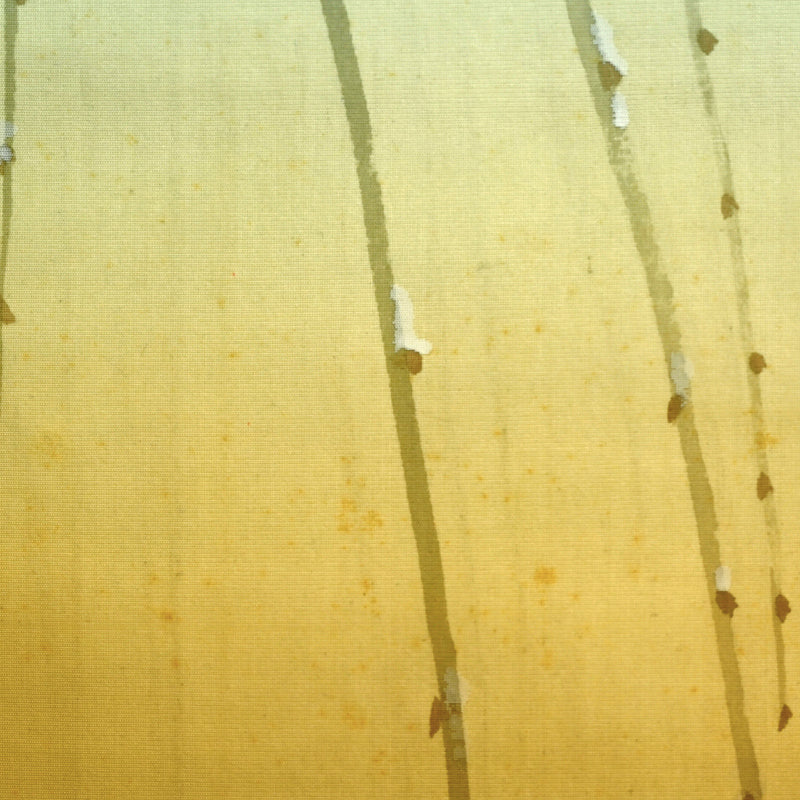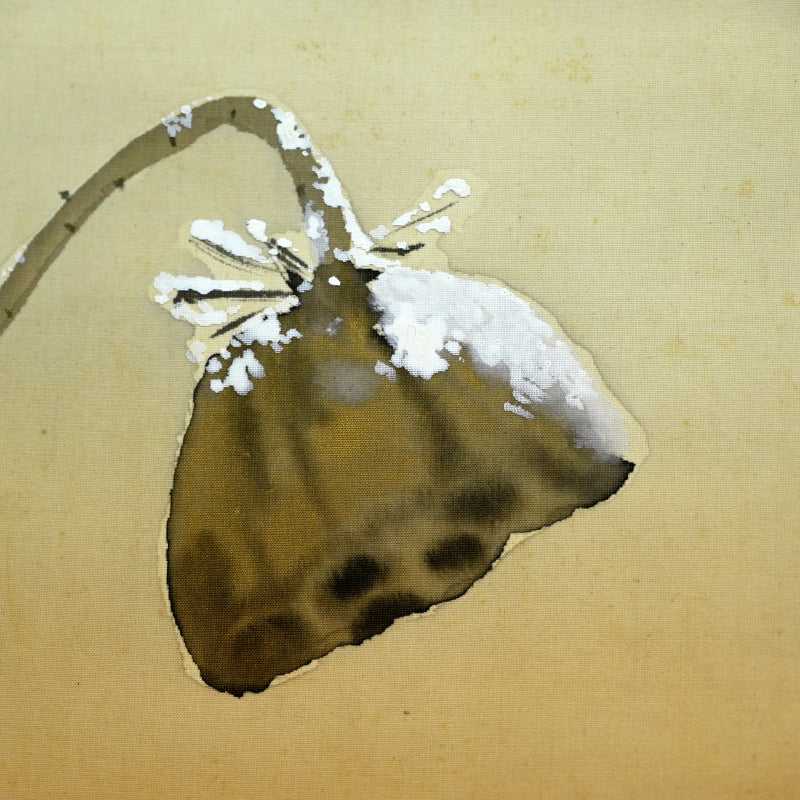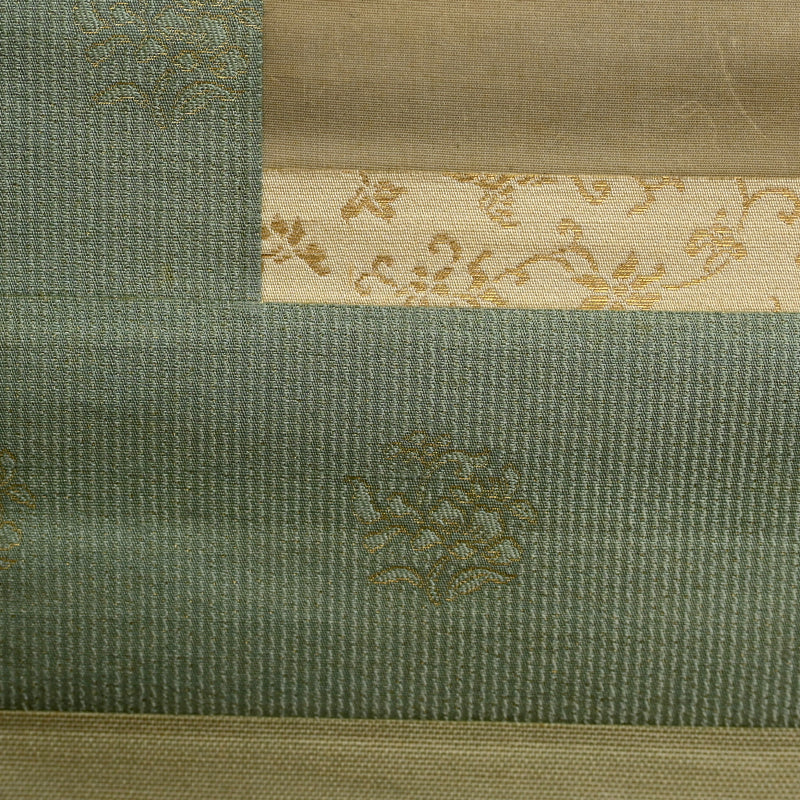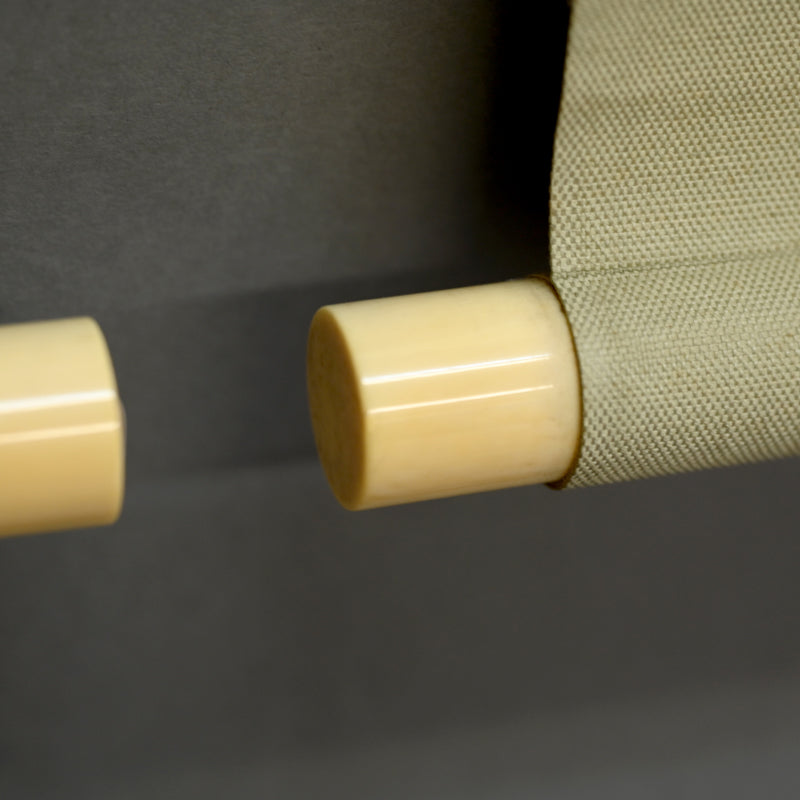Taisho Birds in Snow Scroll Pair ー菊池 華秋, 大谷 尊由 “寒汀”
Taisho Birds in Snow Scroll Pair ー菊池 華秋, 大谷 尊由 “寒汀”
Item Code: F136
受取状況を読み込めませんでした
A black bird rests vivid against the gold tinged leaves of a dried lotus plant covered in snow by Kikuchi Kashu, looking toward a heron under a snow dusted willow by Otani Sonyu on this pair of scrolls enclosed in the original signed double wood (niju-bako) box dated Taisho 9 (1920). Pigment on silk in a silk border with solid ivory rollers (these will be removed for export). The scrolls are 38 x 227 cm (15 x 89-1/2 inches) and are in overall fine condition. There is some faint foxing on the heron scroll around the willow branches.
Kikuchi Kashu (1888-1946) was born in Yamagata Prefecture, given name Keizaburō. He first studied under Kuroki Kakō and later became a pupil of Kawai Gyokudō, from whom he inherited a style grounded in careful sketching from nature. He was a frequent exhibitor at both the Bunten and the Teiten (Imperial Art Exhibitions) and maintained a close friendship with fellow painter Ikeda Terukata. His works are preserved in institutions such as the Yamagata Museum of Art and the Meguro Gajoen in Tokyo as well as the Museum of Modern Art in Tokyo. During the war, he evacuated to his hometown in Yamagata, where he passed away in 1946 (Shōwa 21). His artistic specialty ranged from genre scenes of beautiful women (fūzoku bijinga) to detailed kachōga (bird-and-flower paintings).
Otani Sonyu (1886-1939) was born in Kyoto as the fifth son of Ōtani Kōson (Myōkyo), the 21st (spiritual head) of the Jōdo Shinshū Honganji-ha sect, and his concubine Fujiko Matsubara. His sister was the renowned poet Kujō Takeko and his older brother was the 22nd head of Honganji, Ōtani Kōzui (Shōnin Kyōnyo). He studied painting under Nakajima Kayō and, working under the name Shinsai, and, as a member of the collateral Ōtani family line, oversaw the sect’s social welfare activities. He was also skilled in calligraphy and well-versed in the tea ceremony. As an adult, he supported his brother’s administration of the Honganji as a member of the go-renge (collateral family line), serving in key roles including Executive Director of Honganji, Chairman of the Hongwanji Preservation Foundation, and Acting Chief Abbot. During the Russo-Japanese War, he took a leadership role in organizing missionary activities for troops and made repeated visits to various regions of China for moral support. In 1914, following his brother’s resignation from the position of Monshu due to a scandal, he was considered a strong candidate to succeed him. However, he too became entangled in the same affair and withdrew from religious administration. Later, in 1928 (Shōwa 3), he was appointed to the House of Peers by Imperial nomination and joined the Kenkyūkai political faction. He served as Minister of Colonial Affairs under the First Konoe Cabinet and, in 1938 (Shōwa 13), was appointed Councillor of State. Owing to his frequent travels to the Asian continent alongside his brother and his deep understanding of local affairs, he was named the first president of the North China Development Company, a government-backed initiative. However, his ambitions were cut short when he fell ill and passed away in 1939 (Shōwa 14) at the age of 54.
Share
































